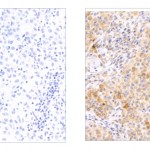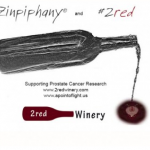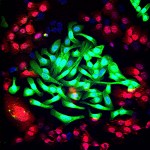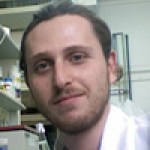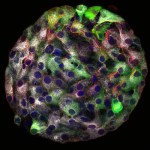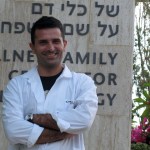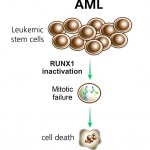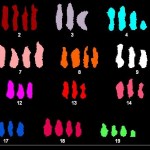Cancer Research
Metastatic melanoma tumors. Left exhibits low or absent expression of RASA2 and reduced survival, typical of about 35% of patients. The sample on the right exhibits high RASA2 expression and increased survival
Rates of melanoma are increasing, even as the rates of other common cancers are decreasing. According to the Melanoma Research Alliance, it is the most common cancer diagnosis in young adults 25-29 years old in the United States, the second most common cancer in young people 15-29, and its incidence has tripled in the last 30 years.
What are we doing about it? The Weizmann Institute’…
A guest post by Robet Hollander, Winemaker
2redWinery, makers of the award-winning Ziniphany© Zinfandel and #2red is 38% towards goal on Indiegogo with all proceeds supporting prostate cancer research through the Robert and Susan Hollander Foundation, an IRS approved 501c3 organization. Campaign supporters, in exchange for their tax-deductible support, can secure wine from the 2015 vintage or from the award-winning wine library of 2redWinery.
Robert Hollander, the winemaker and principle of 2redWinery, started small-volume winemaking in 2007 to indulge a long-standing passion. Passion…
What is a breakthrough in cancer research? It is a new piece of a puzzle made up of a million pieces. It may, however, be a piece that allows a picture to start emerging – one that lets us see the shape of the next piece needed to fill in more of the puzzle, or start making changes to rearrange the picture from one of cancerous growth to one of normalcy.
The Institute’s Prof. Yosef Yarden’s recent research provides a vital piece for the puzzle of resistance – how cancer cells, especially those in recurring cancers, stop responding to chemotherapy. His answer is specific to a kind of lung…
Dr. Gabriele D'Uva is finishing up his postdoctoral research at the Weizmann Institute. Here is his account of three years of highly successful research on regenerating heart cells after injury. Among other things, it is the story of the way that different ideas from vastly different research areas can, over the dinner table or in casual conversation, provide the inspiration for outstanding research:
Three years ago, when I joined the lab of Prof. Eldad Tzahor, the emerging field of cardiac regeneration was totally obscure to me. My scientific track at that time was mainly focused on normal…
What's in a picture?
Prof. Benny Shilo knows the value of a good picture. We recently mentioned his book: Life’s Blueprint, which uses photographs of things like bread dough and yeast cells to illustrate the process of biological development. Here is the image from the most recent piece we have uploaded on his research:
This is an individual Islet of Langerhans, as you’ve never seen it before. The white dots are the insulin-containing vesicles inside the beta cells, which both sense glucose levels and secrete insulin. Shilo and his team managed to get “close-up shots” of the individual cell…
The ‘Nifty Fifty (times 4)’, a program of Science Spark, presented by InfoComm International, are a group of 200 noted science and engineering professionals who will fan out across the Washington, D.C. area in the 2014-2015 school year to speak about their work and careers at various middle and high schools.
Meet Nifty Fifty Speaker Dr. Jordan Green
As a researcher, Jordan Green, Ph.D. is on the front lines of creating innovative technologies and therapeutics that can directly benefit human health.
Specifically, this involves employing techniques in cellular engineering and nanobiotechnology…
To all bits of clockwork that are adjusted in our bodies according to our day-night timetable, we can now add two more: cancer growth and the schedules of our internal complements of bacteria.
Cancer, according to a new Weizmann Institute study, may grow and spread more at night. In this scenario, our cells are getting messages left and right, day and night, and taking them in through the specialized receptors on their outer membranes. During the daytime, our bodies produce natural “wake-up” hormones, and these apparently, take precedence over other incoming messages, their receptors…
I’ve heard that for some the experience of undergoing an MRI scan is claustrophobic, but I find it oddly comfy and cocoon-like. OK, there are those gear-grinding screeches and thumps interrupting the music in the earphones. And the cumbersome set-up for imaging breasts, along with the usual admonition to keep perfectly still, does not leave me in a position I would choose for a nap. Still, I’m on the verge of dropping off when the whole table starts shaking under me. They had warned me about this before I climbed onto the apparatus, but for a second I’m not sure whether to laugh (without…
Cancer, we are told, is a disease of the genes. It originates in mutations in the DNA. But a paper published by a Weizmann Institute group in Cell Reports flips that idea sideways by about 90 degrees: For at least some types of the disease, the healthy, non-mutated version of a gene is no less of a driving force behind the development of cancer than its mutated form.
Prof. Yoram Groner, who led the research, describes the situation as a “balance of terror.” Until now, researchers have assumed that, when a mutation causes cancer it becomes dominant in the cell, overriding the second copy of…
Another advance in cancer research is featured on our website this week. Among other things, this one highlights the dangers of assuming causation from correlation. Prof. Dov Zipori and his team were looking at adult stem cells in the bone marrow. These hold a lot of potential for treating many kinds of disease but, like many kinds of stem cells, there is a risk of these cells differentiating into cancer instead of the intended normal tissue replacement. The idea was to find a marker that could tell which cells were more likely to turn cancerous, thus making the use of these stem cells safer…
New research at the Institute may offer a sliver of hope for treating “triple-negative” breast cancer. “Triple-negative” refers to the fact that the breast cancer cells are missing the three different receptors targeted by the currently available drugs, for instance Herceptin and steroid hormone blockers. This type of cancer also tends to be fairly aggressive, and the risk of early recurrence is higher than for other types of breast cancer.
Triple-negative breast cancer cells do have other receptors – particularly EGFR, a growth factor receptor that would seem to be a good target for…
One of our constant themes is the innovative ways that tools and ideas from math and physics can lead to new insights in the life sciences. Take, for example, a recent study produced by a group that included a professor of mathematics, an oncologist who works in pharmaceutical research and has a Ph.D. in mathematics, an electrical engineer and applied mathematician who is doing a postdoc at Harvard Medical School, and physicians in a medical center research lab.
The idea was to create a mathematical model of a medical syndrome – in this case neutropenia, the low counts of the white blood…
Blurring, chopping and blocking. Three online items this week all deal with some pretty dynamic phenomena.
The blurring is in our perceptions. It turns out that if you even think you have lost money in an experiment, your ability to distinguish between musical notes will be hampered. What’s the connection? Dr. Rony Paz has been showing that this tendency to lump sounds together is tied to fear. In our evolutionary past, humans may have survived because anything that sounded remotely like a predator aroused an immediate “fight or flight” response. But if mild stress can provoke a similar…
Last month, Penn Medicine put out a press release heralding a "cancer treatment breakthrough 20 years in the making." In a small clinical trial, three patients with advanced chronic lymphocytic leukemia (CLL) were treated with genetically engineered versions of their own T cells. Just a few weeks after treatment the tumors had disappeared, and the patients remained in remission for a year before the study was published.
The release didn't, however, explain those "20 years in the making." In 1989, Prof. Zelig Eshhar of the Weizmann Institute's Immunology Department first published a paper…
Today's science news from the Weizmann Institute covers research in neurobiology, environmental science and cancer immunology.
⢠In the first, scientists identified a likely biological marker for autism that shows up even in very young children. Diagnoses of autism are generally not possible so early, as the signs typically appear gradually throughout the first 3-4 years of life. The scientists used fMRI to scan the brains of children aged 1-3 who were just starting to show signs of autistic behavior. Their method: scanning the brains of toddlers while they sleep. It seems that even asleep…
This week's Weizmann news stories: A "steam release valve" for inflammation, a "brake" for cell division and an "amplifier" for quantum signals.
The steam release valve mechanism also involves an amplifier - one that ramps up the inflammation signal in response to viral attack on a cell. When the signal reaches its peak, it trips a nearby protein called caspase-8, which then kills the amps, damping the signal back down. The scientists think that failures in this mechanism could be behind various inflammatory diseases.
The brake on cell division turns out to be our old friend p53. Thirty…
Calling all academics: If you'd like a free advanced copy of my book, The Immortal Life of Henrietta Lacks, get thee to Random House's academic blog and request a copy quick, while supplies last (which probably won't be long at the rate things are going). See below for more information on the book, and advanced praise. Added bonus: If you teach the book this spring, you can also get me to come speak at your school/in your classes as part of my book tour.
Here's Publishers Weekly on The Immortal Life of Henrietta Lacks:
Science journalist Skloot makes a remarkable debut with
this multilayered…
Never pass up an opportunity to get face-to-face time with grants officials from any research funding agency. This from the Department of Defense for those of you in Denver tomorrow:
To all individuals attending the 100th Annual Meeting of the AACR in Denver, Colorado:
The Department of Defense's Congressionally Directed Medical Research Programs (CDMRP) will be presenting a series of short talks on CDMRP and its cancer research funding programs on Wednesday, April 22, from 8:30-10:30 a.m., in Room 607 of the Colorado Convention Center.
Scheduled to speak from the CDMRP are the Director, a…
